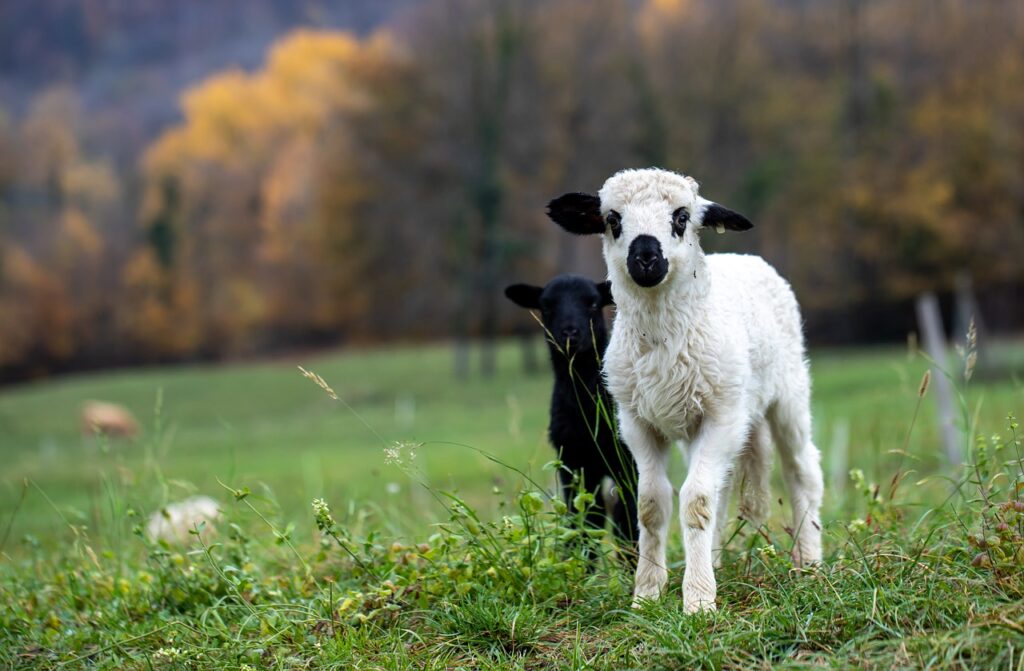
When we think of sheep – or as some mistakenly say, “sheeps” – we often imagine fluffy animals grazing peacefully in the field. But there’s so much more to these creatures than meets the eye. From their cultural significance to their economic utility, sheep have played a pivotal role in human history. Let’s dive into the fascinating world of sheeps, exploring their unique traits, answering common questions, and uncovering little-known facts.
What is a Sheep Called? Why is Sheep Not Sheeps?
The word “sheep” is both singular and plural. Unlike “goat” which becomes “goats” in the plural form, the word “sheep” remains the same. This linguistic quirk can confuse many, but it’s a simple anomaly in the English language. Interestingly, people often jokingly use “sheeps” when referring to multiple sheep, and while it’s not correct, it’s become a playful nod in pop culture.
So, if you’re wondering, What is a sheep called? The answer is simply “sheep,” whether it’s one or a hundred.
The Special Traits of Sheep
Sheep are remarkable animals. Here’s why they stand out:
- Social Nature: Sheep are highly social and thrive in groups. A lone sheep is often anxious, as they feel safest among their flock.
- Keen Memory: Studies have shown that sheep can recognize up to 50 different faces, both of humans and fellow sheep, for several years.
- Adaptability: From the cold highlands to arid plains, sheep have adapted to various climates across the globe.
- Economic Importance: Beyond wool, sheep provide meat, milk, and even products like sheep’s blood agar, a medium used in microbiological studies

Is Lamb a Sheep or Baby?
A lamb is simply a young sheep. Lambs are typically under a year old, and their meat is prized for its tenderness and delicate flavor. As they grow older, they transition into the category of “mutton,” which refers to the meat of mature sheep.
The Role of Sheep in History and Culture
Sheep have left their mark in mythology, religion, and folklore. For example:
- Sheeps Among Wolves: This biblical metaphor speaks of innocence and vulnerability.
- Sheep’s Clothing: A phrase denoting deceit, it originates from the idea of a wolf disguising itself to infiltrate a flock.
- Sheeps Bridge: Historically, shepherds would construct narrow bridges to help their flocks cross rivers safely.
Even today, sheep symbolism is alive and well. In literature, movies like Sheeps Clothing and phrases such as “counting sheep” to fall asleep highlight their continued relevance.
Common Questions About Sheep
What Do Sheep Eat?
Sheep are grazers, thriving on grass and hay. They also enjoy plants like sheep’s fescue and sheep’s burnet. In Minecraft, sheep eat grass, which is a fun nod to their real-life diet.
Where Are Sheep Kept?
Sheep are versatile and can be found grazing in fields, kept in barns during harsh weather, or even roaming the rugged terrains of places like Sheeps Head Peninsula in Ireland.
What Are Sheep’s Enemies?
Sheep face threats from natural predators like wolves and coyotes. Additionally, diseases like sheep’s digestive system infections can pose risks to their health.
The Economic Value of Sheep
Sheep are among the most economically useful animals worldwide. Here’s why:
- Wool Production: Sheep’s fleece is used to create high-quality clothing.
- Meat and Dairy: From sheep’s cheese to lamb chops, their contributions to the culinary world are immense.
- By-Products: Products like sheep’s butter and sheep’s blood have niche applications in gastronomy and science.
Fun Facts About Sheep
- Sheep Can Swim: Yes, sheep are surprisingly good swimmers. In some regions, herders even guide their flocks across rivers.
- Sheep Have Unique Accents: Depending on their region, sheep develop distinct bleats, much like human accents.
- Sheep’s Eyeballs: Sheep have rectangular pupils, giving them a wide field of vision to spot predators. Ever seen a sheep’s eye dissection? It’s a fascinating study in nature’s design.

Sheep in Pop Culture
Sheep have inspired songs, movies, and even food menus like the quirky “Sheeps and Leeks Menu.” Here are some noteworthy mentions:
- Sheeps Ahoy: A playful nod in children’s entertainment.
- Sheeps Clothing Quotes: Memorable lines from movies and books that use sheep imagery.
- Sheep’s Comedy: Stand-up acts often reference the sheep’s quirky demeanor.
Practical Tips for Raising Sheep
If you’re considering raising sheep, here are some starter tips:
- Choose the Right Breed: Breeds like the Merino are prized for wool, while Dorset sheep are excellent for meat production.
- Provide Proper Shelter: Ensure they have a safe space, especially during harsh weather.
- Monitor Diet: Balance grazing with supplemental feed to maintain health.
- Health Checks: Regularly inspect for diseases and parasites.

The Future of Sheep Farming
Sustainable sheep farming is on the rise. Techniques like rotational grazing not only improve pasture quality but also ensure the health of the flock. Innovations like wearable GPS collars are helping farmers monitor their sheeps grazing patterns and health remotely.
Final Thoughts on the World of Sheeps
Sheep are not just fluffy animals grazing in fields; they’re a cornerstone of agriculture, culture, and innovation. Whether you’re interested in their economic value, historical significance, or unique traits, there’s no denying their charm.
So next time you see sheep’s fur or enjoy a slice of sheep’s cheese, remember the incredible journey of these animals. And for those looking to delve deeper, click here to explore products for sheeps and their care: sheeps.
Let’s keep celebrating the humble sheep, one baa at a time.